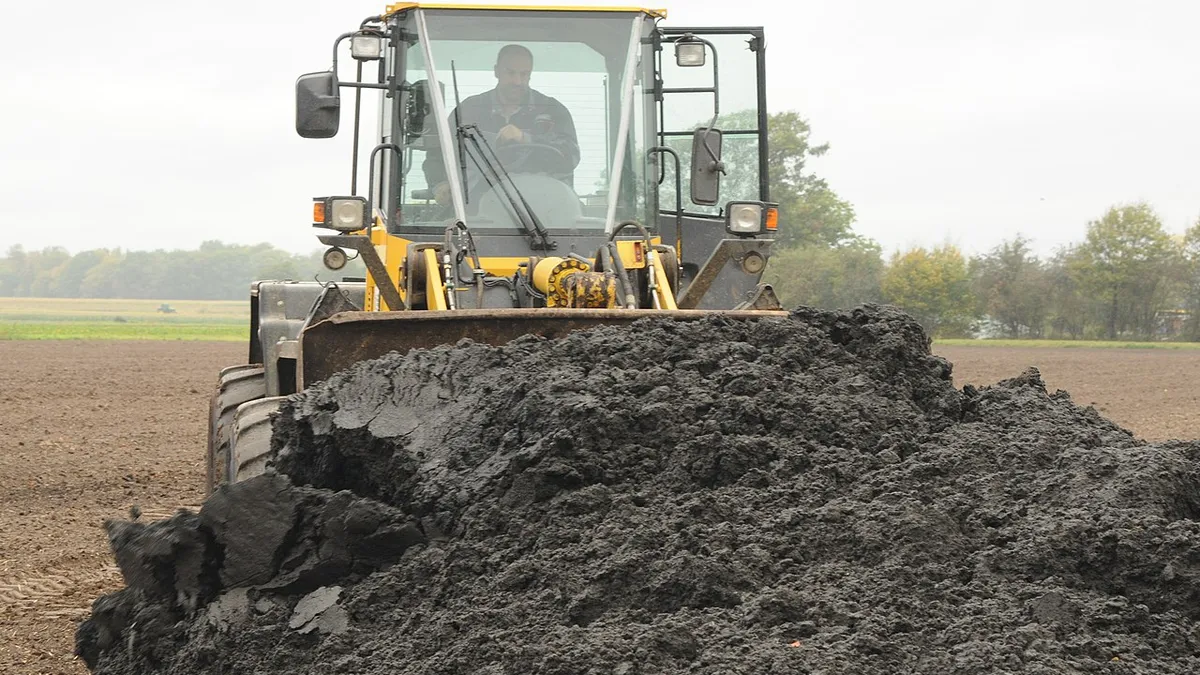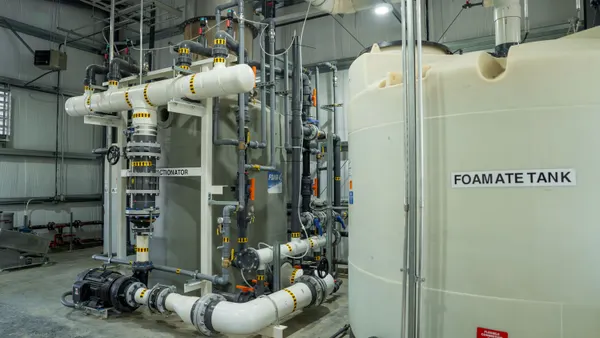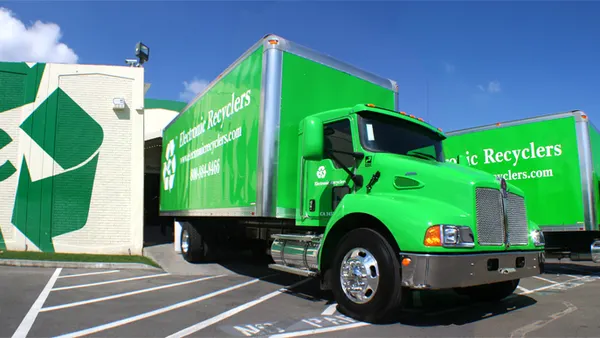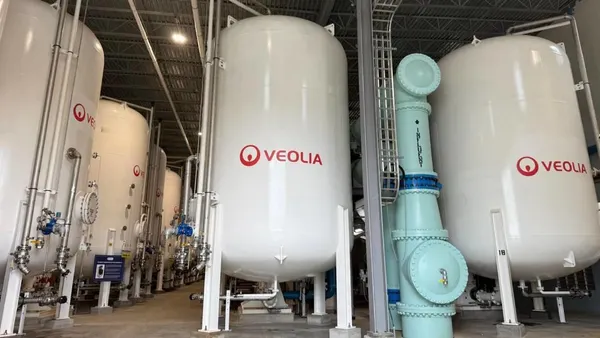Dive Brief:
- Biosolids processing company Synagro released its first sustainability report in September, reporting its scope 1, 2 and 3 emissions for the first time as well as other sustainability measures.
- Synagro managed about 6.5 million tons of biosolids in 2022, roughly 80% of which was diverted toward beneficial use. The company says it has North America's largest fleet of biosolids management facilities, thermal dryers and biosolids composting facilities.
- Synagro plans to explore carbon reduction opportunities through operational efficiency improvements, renewable energy use, fleet and fuel efficiency strategies, materials reductions and other strategies, according to the report.
Dive Insight:
The organics processing company was founded in 1978, six years after the Clean Water Act mandated the removal of biosolids from wastewater. Today, Synagro is once again addressing legislation impacting the organics sector as it helps more than 100 California municipalities divert biosolids from landfills to comply with SB 1383.
The law, passed in 2016, requires the diversion of organics, including biosolids, from landfills. Synagro has built out facilities and infrastructure to handle the material, including its five composting facilities in California and Arizona. It also land applies its biosolids, a practice endorsed by the U.S. EPA and other agencies for decades as a way to improve soil quality and water retention. The company positions itself as part of the circular economy through its role in keeping material that would otherwise be wasted out of landfills and using it in processes seen as beneficial.
“I firmly believe in protecting the planet that has provided so many critical resources to support our life. At Synagro measuring, managing, and reporting on our emissions is our meaningful step toward supporting a more responsible tomorrow,” CEO Bob Preston said in an emailed statement.
In addition to its biosolids business, the company has also begun growing its share of food waste processing services. Last year, Synagro accepted and processed more than 100,000 tons of organic waste. It plans to increase that total next year as feedstock from municipalities via organics diversion programs grows.
The company reported its emissions for the first time in its sustainability report. Its scope 1 and 2 emissions totaled 175,708 metric tons of carbon dioxide equivalent. They came primarily from stationary combustion, fugitive emissions from composting and thermal reduction, mobile sources and purchased electricity. The company also reported that its scope 3 emissions were 728,508 metric tons of CO2e, the vast majority of which came from fugitive emissions associated with landfilling or land applying biosolids.
Synagro’s stationary combustion emissions stem in large part from the company’s biosolids drying facilities. To reduce those emissions, Synagro has begun using biogas as a fuel source at five thermal dryers in the U.S. and Canada, which is produced either from the company’s own anaerobic digesters or its host wastewater treatment facilities. The company said continuing to implement biogas use at its facilities would be a “focus” of its carbon-reduction efforts. The company also said it was optimizing fleet routes in order to lower its mobile source emissions and increase the percentage of biosolids that are diverted from landfills.
Synagro hired its first chief sustainability officer, Kip Cleverley, in April this year. Looking ahead, Cleverley will help lead the company as it seeks third-party verification for its carbon footprint, develops a carbon reduction roadmap and implements other strategies to improve its sustainability.











